Hotspot Alert: Mastering the “Danger Zone” in Food Safety
When it comes to preventing foodborne illness, knowing the “Danger Zone” temperature range is your first line of defense. In this guide, we’ll unpack exactly what temperatures define the Danger Zone, why it matters, real-world examples of what can go wrong, and how you can stay in control, powered by the expert training from My Food Service License.
What Is the “Danger Zone”?
The Danger Zone is the temperature band in which pathogenic bacteria multiply most rapidly in food. According to the FDA Food Code, that range is:
-
41°F to 135°F (5°C to 57°C)
Within this window, bacteria like Salmonella, E. coli, and Listeria can double in number every 20 minutes, turning a few dangerous cells into millions before you even fire up the grill.
Why It Matters: The Science of Bacterial Growth
• Exponential Growth: At 70°F, a single bacterium can become 1.28 million in just 4 hours. • Toxin Production: Some bacteria release heat-stable toxins as they multiply, meaning reheating won’t eliminate the threat. • Cross-Contamination: Juices dripping at Danger Zone temps can spread pathogens from raw meat to salads, utensils, and cutting boards.
Keeping foods either cold (≤41°F) or hot (≥135°F) breaks the bacterial growth chain and safeguards every bite.
Danger Zone in Action: Real-World Examples
| Scenario | Temp. Held | Time Elapsed | Risk Level |
|---|---|---|---|
| Potato salad left on the buffet | 65°F | 3 hours | Moderate: Bacteria doubling every 20–30 min. |
| Roast turkey cooling on the countertop | 70°F | 2 hours | High: Toxin-producing Staphylococcus growth. |
| Unrefrigerated soup (leftover) | 55°F | 8 hours | Severe: Millions of bacteria could cause illness even if boiled. |
| Slow-defrosted chicken at room temp | 68°F | 1 hour | High: Rapid Salmonella expansion. |
Controlling the Danger Zone: Best Practices
-
Quick Chill & Rapid Reheat
-
Cool hot foods from 135°F to 70°F within 2 hours, then to 41°F in the next 4 hours
-
Reheat to at least 165°F for 15 seconds within 2 hours
-
-
Accurate Monitoring
-
Calibrate thermometers weekly
-
Log temperatures at opening, during service, and before storage
-
-
Smart Holding Equipment
-
Cold holding: Keep ≤41°F with ice baths, refrigerated display cases
-
Hot holding: Maintain ≥135°F using steam tables, warming drawers
-
-
Portion Control & Rotation
-
Store in shallow pans (≤4" depth) for faster cooling
-
First In, First Out (FIFO) to minimize time in the Danger Zone
-
How My Food Service License Elevates Your Game
Understanding the Danger Zone is fundamental, but applying it under pressure takes practice. My Food Service License’s courses dive deep into:
-
Food Handler Program: Master personal hygiene, temperature charts, and basic cooling/reheating protocols in 2–4 hours.
-
Certified Food Protection Manager (CFPM): Build a complete Hazard Analysis & Critical Control Points (HACCP) plan, including Danger Zone controls, in an interactive, self-paced course.
Both programs offer:
-
24/7 online access (desktop, tablet, mobile)
-
Realistic kitchen simulations and quizzes
-
Instant, printable certificates accepted by health departments nationwide
-
24-hour support via chat and email
Final Sizzle: Turn Knowledge into Culture
Mastering the Danger Zone doesn’t just protect your guests—it builds trust, streamlines inspections, and elevates your kitchen reputation. Ready to transform temperature tracking from guesswork into a science? Enroll in My Food Service License’s Food Handler or CFPM program today and lock down your operations—one degree at a time.
#ThawRight #DangerZone #FoodSafety #MyFoodServiceLicense #KitchenExcellence





